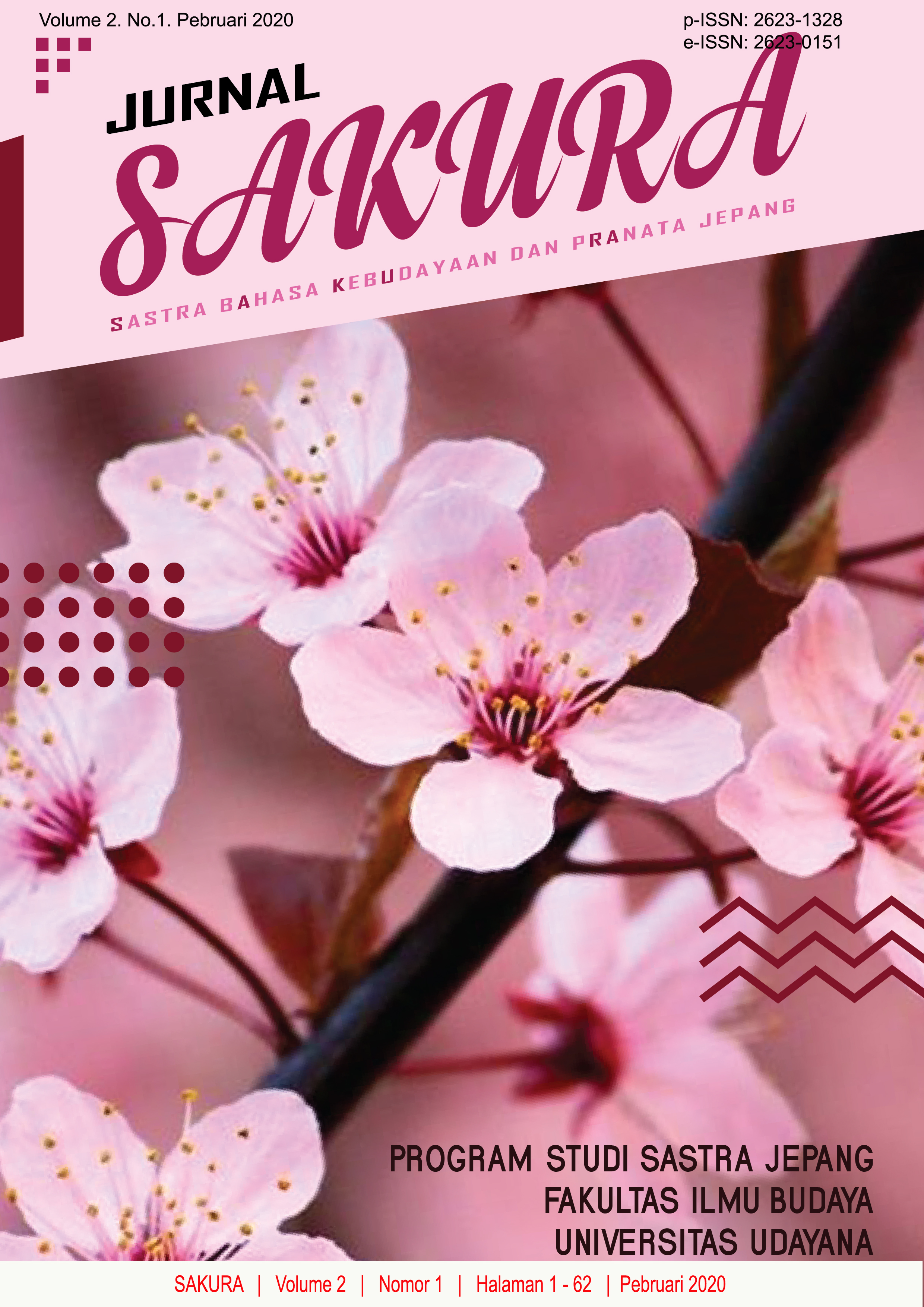Pembentukan dan Makna Kata Majemuk antara Onomatope dan Bagian Tubuh Manusia dalam Bahasa Jepang di Media Sosial Twitter
Abstract
The title of this research is “Formation and Meaning of Compound Words from Onomatopoeia and Human Body Parts in Japanese on Social Media Twitter”. This research focuses on the forming process and meaning of compound words from onomatopoeia and human body parts in Japanese on social media twitter. This research was analysed by using formal and informal method. Compound words formation analysis used word formation theory from Kageyama and Kishimoto (2016) and the meaning of compound words analysis used semantic theory from Chaer (2012) and characteristic of Japanese onomatopoeia from Akimoto (2002). The result of this research is on the 25 data was analyzed, there are 14 data formed from the composition process and 11 data formed from the composition process followed by the shortening process of the words and part of speech classification in all data has changed. For the meaning, 22 data have grammatical meaning and 3 data have lexical meaning and all data have derivative meaning from the basic onomatopoeia.
Downloads
References
Badri, Muhammad. 2011. Corporate and Marketing Communication. Jakarta: Universitas Mercu Buana
Chaer, Abdul. 2012. Linguistik Umum. Jakarta: Rineka Cipta
Ikuhiro, Tamori. 2010. Onomatope Gion Gitaigo wo Tanoshimu. Tokyo: Iwanami Shoten
Iwasaki, Noriko, dkk. 2017. The Grammar of Japanese Mimetics. New York : Routledge
Kageyama, T and Kishimoto, H. (2016). “Handbook of Japanese Lexicon and Word Formation”. Berlin: Mouton De Gruyter
Kwarini, Ida Ayu Putri. 2016. “Pembentukan dan Makna Gairaigo dalam buku Ichinichi Sen En De Asoberu Minami No Shima Karya Hayashi Kazuyo” (skripsi). Denpasar: Universitas Udayana.
Masahiro, Ono. 2007. Nihongo Onomatope Jiten: Giongo Gitaigo 4500. Tokyo: Shogakkan.
Primawan, Randa Arkie. 2015. “Analisis Makna dan Asal Pembentukan Wakamono no Kotoba dalam Sosial Media Twitter” (skripsi). Jakarta: Universitas Bina Nusantara.
Surdayanto. 1993. Metode dan Aneka Teknik Analisis Bahasa. Yogyakarta: Duta Wacana Utama Press.
Wedayanti, N. P. L. (2015). PRODUKTIVITAS KATA HARASSMENT BERKOMPOSISI DALAM BAHASA JEPANG. PRASI, 10(19)
Zaim, M. (2014). Metode Penelitian Bahasa: Pendekatan Struktural. Padang: FBS UNP Press













